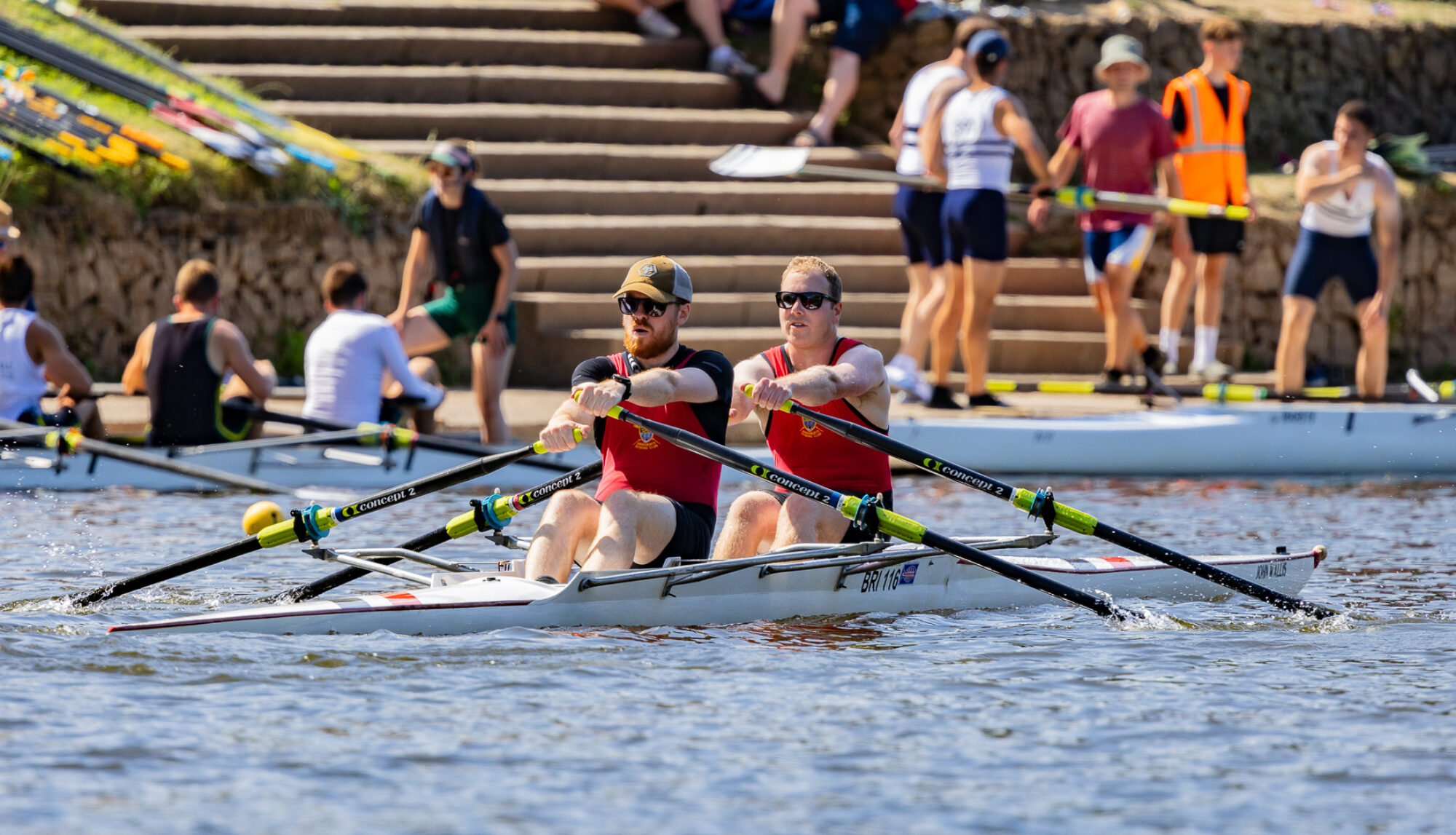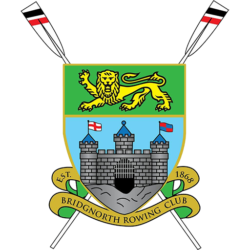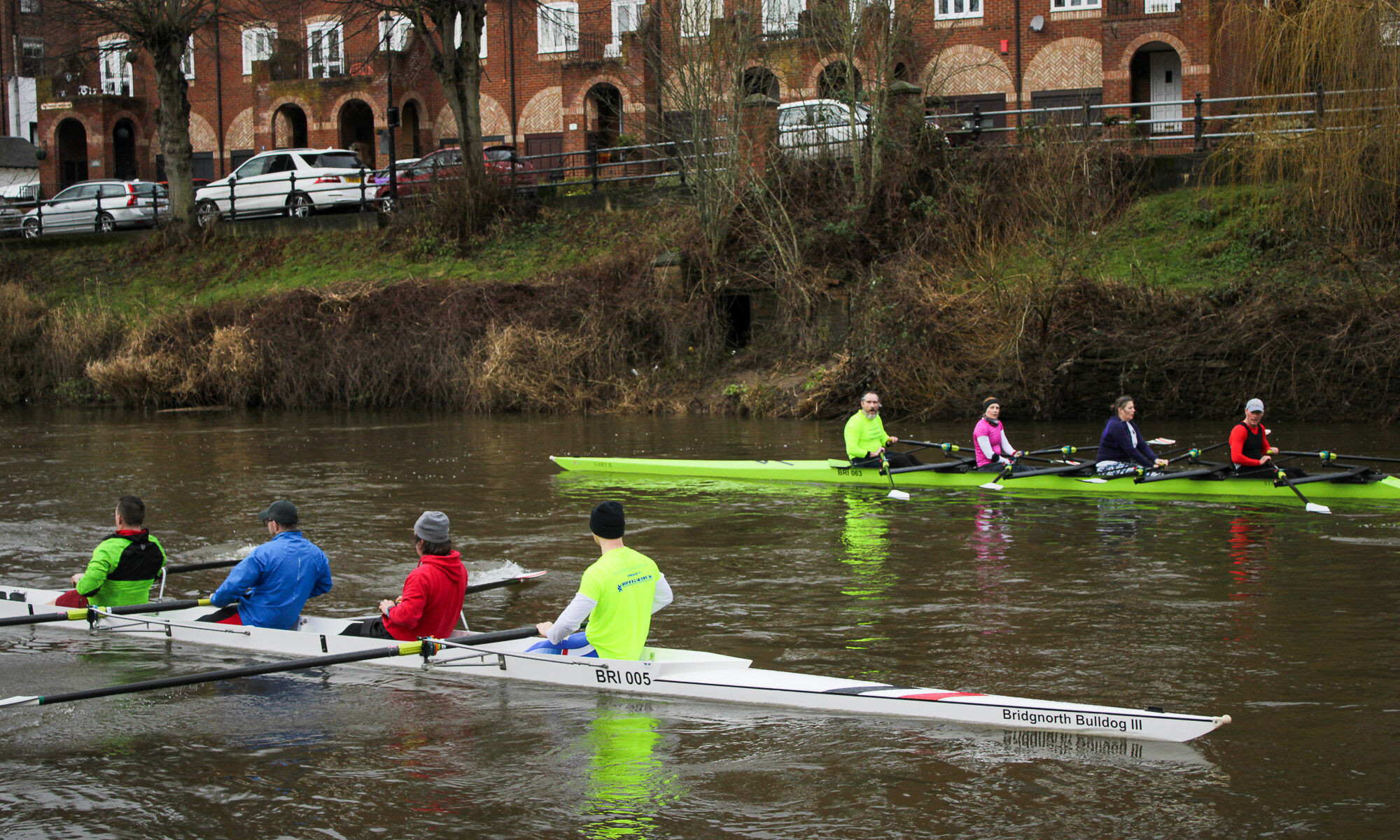This incorporates the clubs Safety Rules and Emergency Response Plan
The purpose of this page is to describe how club members should act in order to keep themselves and others safe when on the water and undertaking land training activities. Bridgnorth Rowing Club is committed to meeting these requirements by following the Row Safe guidelines, laid down by British Rowing.
Water sports by their very nature involve some risk, all those who take part should be aware of those dangers and must accept them whilst trying to minimise them.
As a rule, every club member shall be responsible for his or her own safety and the safety of others both on and off the water, however, every member must also:
- Not behave in a way which endangers other members or the general public.
- Assist and advise other members who are less experienced.
- Help, as far is practical any person who gets into difficulty on the river.
Swimming Standards
All rowers must be in good health and must be able to float swim “at least” 50 meters in light clothing, this is a minimum requirement.
All senior members and parents or guardians of junior members must sign a declaration on the club application form confirming that they can meet the minimum swim standard.
The club will hold regular swim tests together with capsize training and drills to ensure that all members can meet this requirement.
If an incident arises due to non-disclosure of a pre-existing medical condition or a rower having failed to demonstrate competence in the water, the Captain or Vice-Captain may reserve the right to withdraw permission for the member to take part in water-based activities until the matter has been investigated further and additional support/training be determined.
Boat Safety Checks
Before any outing is undertaken, all equipment must be checked to ensure that it is in a safe condition and in working order:
- Check the hull and canvases for damage
- Check the bow ball
- Check the heel restraints
- Check all hatch covers are in place and secure.
Under no circumstances whatever shall any boat be taken onto the river if it does not meet the above checks.
All deficiencies must be reported to the Captain/Vice Captain or in their absence the Club Safety Officer, who must take appropriate action to ensure that the boat is not used until it satisfies safety requirements.
A “DO NOT USE” notice, with a description of the deficiency should be prominently (and firmly), affixed to the boat, so that others do not take it out on the water until the repair work has been completed.
Safety Equipment
- Coxswains MUST always wear a life jacket while on the water. Lifejackets are available in the lower boathouse adjacent to the steps to the upper boathouse.
- The life jacket must be checked for serviceability at the start of each outing.
- Any lifejackets found to be damaged must be reported to the Captain/Vice Captain asap.
Clothing
- Crews must always dress for the conditions, while ensuring the clothing will not impede their ability to row.
- Single scullers and bow seat crew members must ensure they are wearing a high-visibility top to help them to be seen while on the water. Hi vis vests are available in the club house if needed.
- All club members planning to go out must ensure they’ve a change of clothing with them and a towel, in the event of capsize. Spot checks maybe performed by the Captain/Vice Captain or Safety Officer and failure to produce the items when requested will result in your outing being cancelled.
Boating
The Captain/Vice Captain Club boats are to be notified of any trips out, to ensure club boats are not double booked.
All rowing shall take place between upstream of the landing stage and “Apley Bridge”. The area immediately after the landing stage may be used for turning prior to either heading back up stream or landing after an outing. (See the Bridgnorth Rowing Club – River Map for more details)
Boats leaving from the club landing stage shall be carried out with the bows facing upstream, likewise all landings at the landing stage shall be with the bows facing upstream.
It is the responsibility of anyone boating unsupervised, or anyone supervising crews, to carry out a risk assessment prior to going a float. This can be done using the “Risk Matrix”, a copy of which is also displayed next to the booking out folder. The risk matrix contains additional guidelines and recommendations regarding when NOT to boat.
Although we as a club observe the navigational rules of staying on the starboard side of the river in relation to the boat’s direction of travel, other river users may not. It’s important ensure members maintain a good lookout while on the river.
Junior Members
The club only allows junior rowers (under the age of 18) under special circumstances and are to always be under the supervision of their parents while in the club and competing.
Land Training Equipment
The club has several Concept Rowing machines (Ergos) for members use; these should only be used following a course of instruction from a competent user.
All members must not use the weight training equipment unless they feel confident in using them. If in doubt, please ask.
It is imperative that all members ensure they do not over-exert themselves while using this equipment. Improvements in physical conditioning take place via regular training sessions where intensity/load can be increased over time, as opposed to occasional high intensity/load sessions to “make up” for missed sessions.
Rowing has a good safety record (as far as major injuries are concerned) however, it is incumbent on all its members to respect all club equipment and to take care in its use.
Pedestrians
Always take great care when carrying boats and blades to and from the landing stage. A narrow but occasionally busy public footpath lies between the boathouse and landing stage steps and care must be taken to ensure members of the public are not injured, walking into boats being carried at shoulder height.
Actions in the Event of An Incident on the Water
In the event of a medical incident on the water, crews are required to assess and prioritise the needs of the casualty above all else. Where possible, return to the landing stage immediately, phoning ahead if necessary to ensure assistance is on hand.
If it is deemed necessary to land sooner, crews are to prioritise finding a safe place to land and secure the boat where possible. Once safely landed, the crew is to contact the captain/vice-captain either by phone or WhatsApp etc to inform them of the incident so they may be able to render additional assistance if necessary.
If an issue arises with a single sculler, other crews are to prioritise aiding and supporting the sculler to ensure they can return to the club safely.
Actions in the Event of An Incident off the Water
In the event of a medical incident off the water, club members are expected to prioritise rendering assistance to any persons in need of attention. Furthermore, club members are expected to assess and remove any hazards that may have led to the incident where possible and safe to do so.
The club Captain/Vice Captain must be notified and an incident form completed and passed to the club safety advisor.
Emergency Contacts
A list of emergency contacts for club members is maintained by the membership secretary. This list is shared electronically with the relevant club officers. In the event of a member being capacitated or injured the details will be used to notify the specific emergency contact to that effect. On leaving the club, a members emergency contact details will be expunged from the list.
Emergency Equipment
| Item | Location | Comments |
| Throw Bags (Qty 4) | Hanging inside lower and upper boathouse entrances | |
| Life Buoys (Qty 3) | Hanging on the back of the lower and upper boathouse doors | |
| Defibrillator (Qty 1) | Stored outside the club house behind the upper boathouse door | |
| First Aid Kit (Qty 2) | Green box mounted on the wall to the right of “Johns Den” in the upper boat house. Additional first aid kit in black bag to be taken with boats when attending race meets. | A list of trained first aiders is displayed on the safety notice board and by the first aid kit |
Use Of First Aid Kits
All members are to inform the Captain/Vice Captain or Safety Officer, prior to accessing the first aid kits (if possible) or as soon as practical afterwards, so that: –
a) the Captain/Coach/Safety Officer are made aware of the situation,
b) that they can ensure that the appropriate level of stock is maintained in the first aid kit,
c) an Incident Report is logged.
Incident Reporting
No matter how careful we are, accidents do happen. Sometimes there is no accident but there is a “near miss” or an event or circumstance that could cause harm or damage.
Whatever the incident is, no matter how minor, it must be reported to the Captain/Vice Captain or the Safety Officer, who must ensure that the incident is reported on the British Rowing Incident Reporting Section of their web site. Anyone can submit a report and members should be encouraged to do so.
Each report is automatically passed to the Regional Safety Adviser and to the Club Safety Officer.
Emergency Contacts
- Emergency Services: 112 or 999
- Police Non-Emergency: 101
- Bridgnorth Police Station:
- 101 5309
- Wenlock Road, Bridgnorth, Shropshire, WV16 5BB
- Bridgnorth Hospital:
- 01746 762 641
- Northgate, Bridgnorth, Shropshire, WV16 4EU
- Princess Royal Hospital (Telford): 01952 641 222,
- The Princess Royal Hospital, Apley Castle, Apley, Telford, TF1 6TF
| Rowing Club Address | Coordinates |
| Bridgnorth Rowing Club Boat house, Severn Park, Bridgnorth, WV15 5AD, Entry via Severn Park | OS X (Eastings): 371985 OS Y (Northings): 371985 Lat (WGS84): N52:32:13 (52.537014) Long (WGS84): W2:24:52 (‐2.414461) Nat Grid: SO719933 / SO7198593320 |
| What3Words officials.swan.searcher | |
Additional Information
View the latest Club Risk Assessment (PDF)


